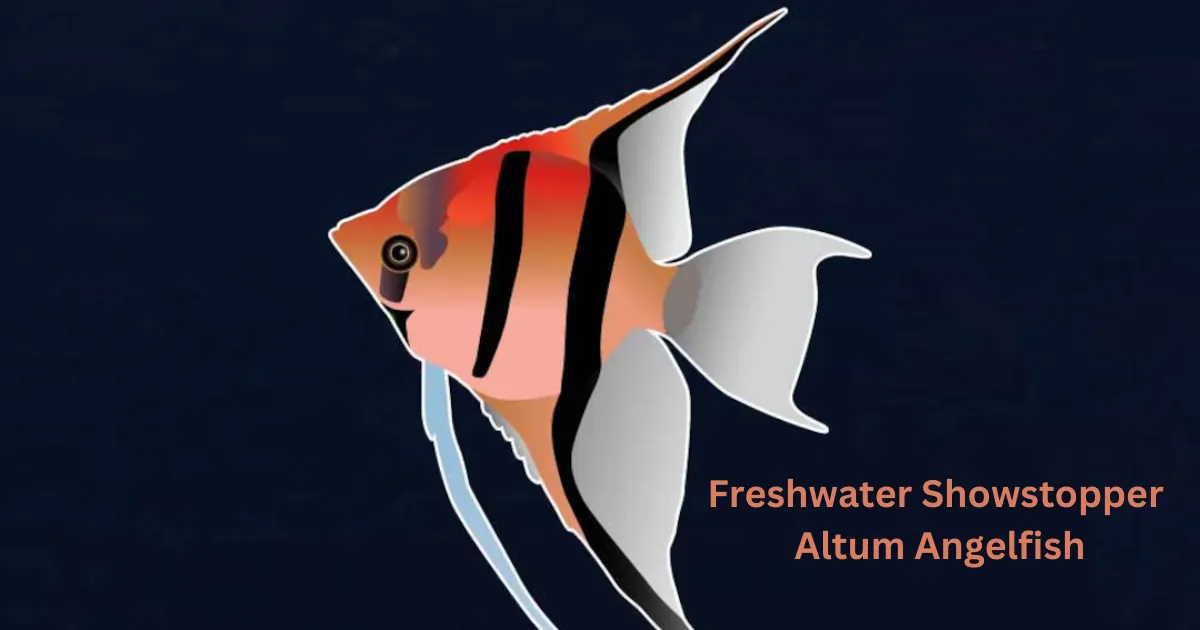Altum angelfish (Pterophyllum altum) are stunning freshwater fish that are highly sought after by experienced aquarium enthusiasts. They are known for their unique appearance, with a tall and elongated body, extensive fins, and striking coloration. In this comprehensive guide, we will explore everything you need to know about altum, including their habitat, description, care requirements, tank mates, and breeding. Whether you are a seasoned fish keeper or a beginner, this guide will provide you with all the information you need to successfully care for altum and create a thriving aquarium environment.
Habitat and Distribution.
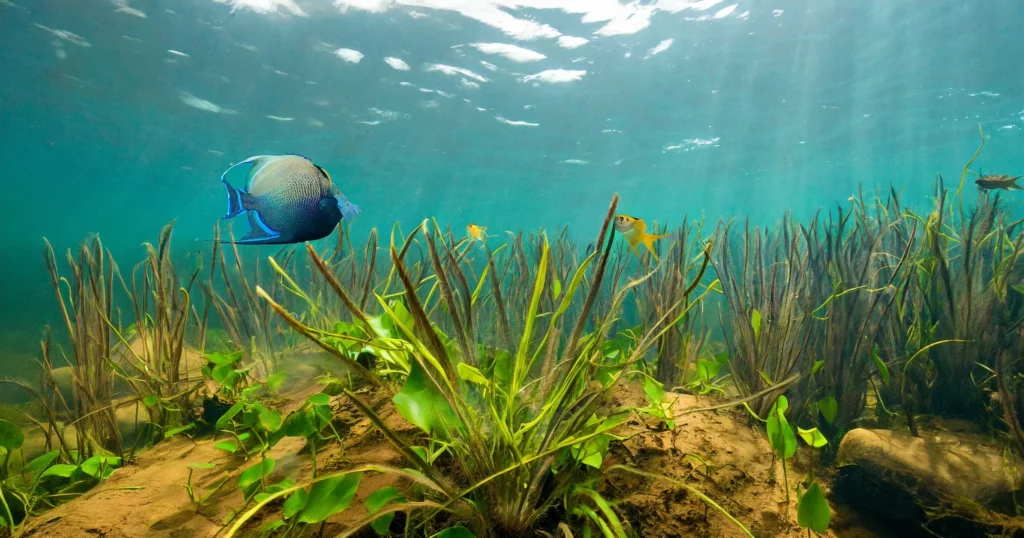
Altums are native to the Amazon River basin in South America. They can be found in the upper Negro River drainage and the Orinoco River basin in tributaries of the upper Orinoco River. These fish inhabit areas with moderate water flow, submerged tree and plant roots, and underwater vegetation. They thrive in soft, well-oxygenated waters and are commonly found in black and white waters. Altum angelfish are often encountered in small groups in coastal areas, where they seek shelter among aquatic plants and fallen trees.
Description.
Altum angelfish are the largest of the three described angelfish species, reaching up to 7 inches in length and 9 inches in height. They have a laterally compressed body with a diamond shape and a distinctive notch on the upper part of their snout. Their fins are long and flowing, adding to their elegant appearance. The body coloration of altum angels is silver with dark stripes that can vary in intensity. The fins can display red striations, and adults may have red spots and a blue-green cast on their dorsal fin. These fish are visually striking and make a beautiful addition to any aquarium.
Altum Angelfish Size and Appearance.
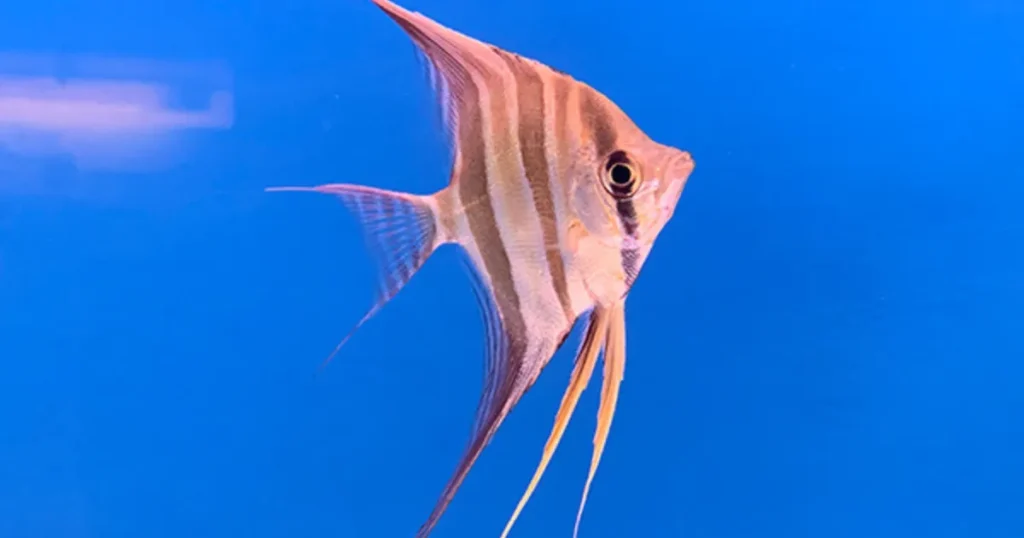
Altum angelfish stand out for their impressive proportions compared to other angelfish species. On average, adults reach 6-10 inches in length from mouth to tail. Their bodies are laterally compressed and accentuated by extravagant, flowing dorsal and anal fins that can reach 6 inches long.
While some color variations exist, most display an elegant silver base color with neon blue and yellow stripes across the head along with bold spotting on the gill plates. The fins may feature darker gray or black edging and details. Their iconic appearance makes them a prized show fish.
Types of Altum Angelfish.
There are a few different color variations and patterns found among altum angelfish:
- Silver Altum – The most common variety with a silvery white body and yellow-and-blue striped head.
- Black Altum – A striking black variant with yellow-and-blue accents.
- Gold Altum – Displays an orange-gold base body color rather than silver.
- Marbled Altum – Has an intricate marbled pattern across the body and fins.
- Leopard Altum – Features leopard-like dark spotting across the body and fins.
Regardless of color type, all require the same care and tank conditions to thrive. Select the variety that appeals most to your tastes.
Altum Angelfish Lifespan.
In the wild, altum typically live for 5-10 years. With optimal care in an aquarium, they have similar lifespans of 5-10 years on average. There are several factors that affect their longevity:
- Tank Size – Altum need roomy aquariums to reach their full lifespan potential. Small, cramped tanks lead to stunted growth and stress.
- Water Quality – Keeping water parameters stable with regular testing and partial water changes supports long life.
- Diet – A nutritious, varied diet fuels good health and long lives.
- Disease Prevention – Quarantining new fish and acting quickly when signs of disease emerge maximizes lifespan.
By carefully considering these key factors, you can provide the best possible care for your altum angelfish to enjoy them for years to come.
Fish Keeping Difficulty.
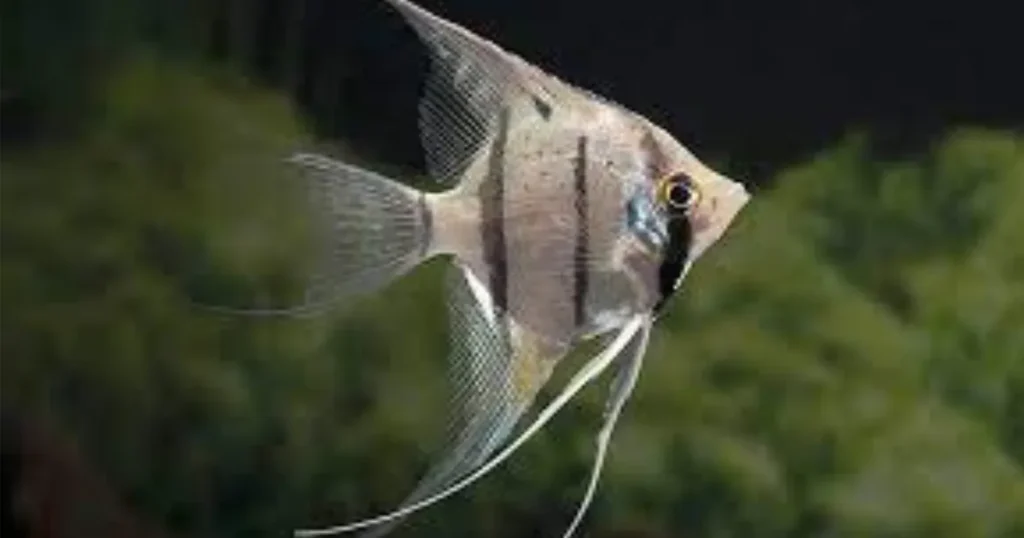
Altum angelfish are considered moderately difficult to keep and are recommended for experienced aquarists. They have more specific care requirements compared to common angelfish and can be sensitive to changes in water conditions. These fish prefer soft, acidic water with a pH range of 4.5 to 6.5. They require a large tank with plenty of swimming space and should be provided with a well-maintained filtration system and regular water changes. Altum can be timid and easily frightened by sudden movements or changes in light intensity, so a calm and peaceful environment is essential for their well-being.
Altum Angelfish Care.
Tank Size.
Due to their large size and active nature, altum angelfish require a spacious tank to thrive. A minimum tank size of 55 gallons is recommended for a single fish, but if you plan to keep a pair or a community, a larger tank is necessary. Altum angelfish need ample room to swim and explore, so providing a tank that is at least 4 feet long and 2 feet wide is ideal. It’s important to consider the height of the tank as well, as they have tall bodies and long fins. A tank with a height of at least 2 feet will allow them to fully extend their fins and showcase their natural beauty.
Tank Setup.
Creating the right tank setup is crucial for the well-being of altum. They prefer a warm and well-oxygenated environment, similar to their natural habitat. Here are some key factors to consider when setting up the tank for altum angelfish:
Substrate and Decorations
Altum angels are not known to dig or disturb plants, so any substrate can be used in the tank. However, a sandy or fine-grained substrate is recommended to mimic their natural habitat. Adding driftwood, rocks, and plants will provide hiding places and create a more natural-looking environment. Altum prefer areas with plenty of vegetation, so adding hardy plants such as Amazon swords, Java ferns, and Vallisneria will enhance their well-being.
Water Parameters
Maintaining appropriate water parameters is crucial for the health of altum angelfish. They require soft, slightly acidic water with a pH range of 5.5 to 7.0. The water temperature should be kept between 75 and 82°F (24-28°C). Regular water testing is essential to ensure that the pH and temperature remain within the recommended range. It’s also important to provide good water circulation and aeration in the tank to ensure proper oxygenation.
Lighting
Altum angelfish prefer subdued lighting conditions, mimicking the dappled sunlight they would experience in their natural habitat. Use low to moderate lighting and provide areas of shade and open spaces for the fish to swim. Avoid bright, direct lighting, as it can cause stress and discomfort for the fish.
Tank Mates.
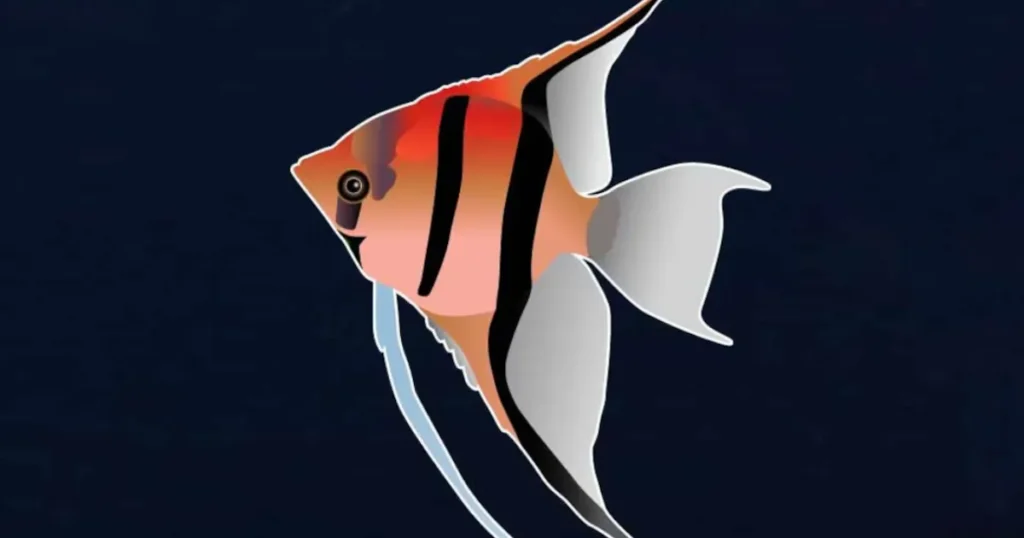
Altum angelfish are generally peaceful but can become territorial, especially during breeding. When choosing tank mates for altum angels, it’s important to consider their size, temperament, and compatibility with soft, acidic water conditions. Here are some suitable tank mates for altum angelfish:
Large Tetras
Large tetras, such as Congo tetras and emperor tetras, can coexist peacefully with altum. These tetras are active and colorful, adding vibrancy to the tank.
Corydoras Catfish
Corydoras catfish are bottom-dwelling fish that can live harmoniously with altum angels. They help keep the substrate clean and are compatible with the soft, acidic water conditions preferred by altum angelfish.
Dwarf Cichlids
Certain species of dwarf cichlids, such as Apistogramma and German blue rams, can be suitable tank mates for altum angelfish. These smaller cichlids are known for their vibrant colors and peaceful nature.
Peaceful Community Fish
Peaceful community fish, such as neon tetras, harlequin rasboras, and guppies, can be compatible tank mates for altum angelfish. It’s important to choose species that are similar in size and temperament to prevent any aggression or stress.
Avoid keeping small fish or fin-nipping species with altum, as they may be seen as prey or provoke aggression. Always monitor the interactions between tank mates and be prepared to separate them if any issues arise.
Feeding.
Altum angelfish are omnivorous and have a varied diet in the wild. They feed on small fish, insects, worms, and other aquatic invertebrates. In captivity, it is important to provide a balanced diet that includes a mix of high-quality flakes, pellets, and frozen or live foods. Feed them a variety of foods, such as brine shrimp, bloodworms, daphnia, and high-quality angelfish-specific pellets. It’s important to avoid overfeeding to prevent obesity and maintain good water quality.
Complete Angelfish Feeding Guide…
Disease Prevention.
Altum angelfish are prone to some common tropical fish diseases that can cut their lives short if left unchecked:
- Ich – Caused by the ichthyophthirius parasite and identified by white spots across the body. It can be treated with medications, increased temperatures, and aquarium salt.
- Fin Rot – Bacterial infection that causes frayed, rotting fins. Improving water quality and antibiotics can treat it.
- Parasites – Intestinal parasites are common and can be eliminated with deworming medications.
Keeping them in optimal health requires a proactive approach to disease prevention. Here are some important steps to take:
Read More About Common Angelfish Disease…
Quarantine New Fish
Before introducing new fish to your tank, it is crucial to quarantine them for a minimum of two weeks. This helps prevent the introduction of diseases or parasites to your established tank. Monitor the new fish closely for any signs of illness during this quarantine period.
Maintain Clean Water
Regular water changes and proper filtration are essential for maintaining good water quality. Altum angelfish are sensitive to changes in water conditions, so it’s important to monitor ammonia, nitrite, nitrate levels, and pH regularly.
Provide a Balanced Diet
A well-balanced diet is crucial for the overall health and immune system of altum angelfish. Ensure that they receive a variety of high-quality foods to meet their nutritional needs.
Avoid Overcrowding
Overcrowding can lead to stress and increased disease susceptibility. Provide enough swimming space for your altum angelfish and avoid overcrowding the tank with too many fish.
By following these disease prevention measures, you can help ensure the long-term health and well-being of your altum angelfish.
Breeding Altum Angelfish.
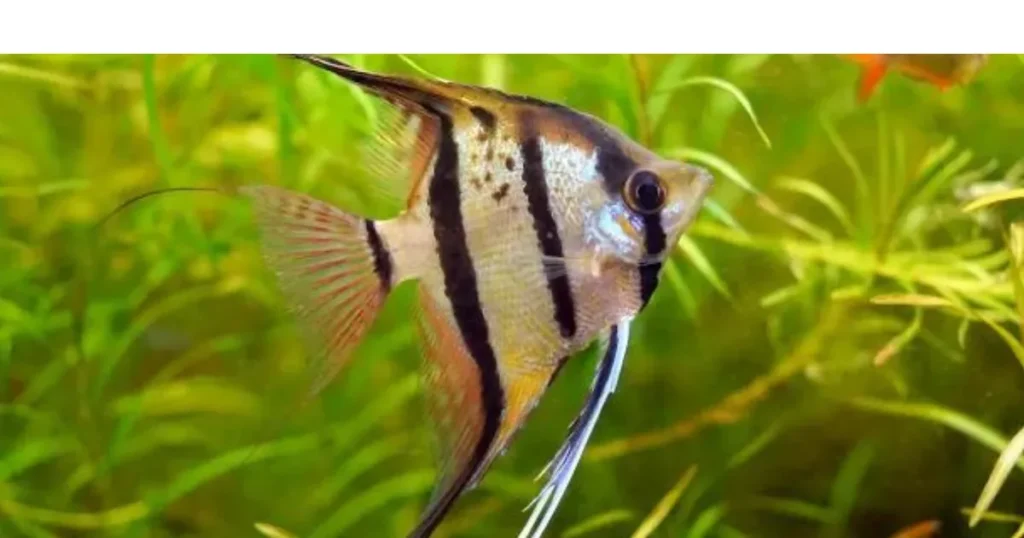
Breeding altum angelfish can be a challenging but rewarding experience. Here are some key considerations for successful breeding:
Pair Formation.
Altums are monogamous and will form pairs when they reach sexual maturity. It’s best to start with a group of young fish and allow them to pair off naturally. Once a pair has formed, they will become territorial and defend their breeding territory.
Breeding Tank Setup.
A separate breeding tank should be set up to encourage spawning behavior. The tank should have soft, slightly acidic water with a pH range of 5.5 to 6.5. Provide plenty of vertical surfaces, such as broad-leaved plants or spawning cones, for the pair to lay their eggs on. The water temperature should be raised to around 86°F (30°C) to stimulate breeding behavior.
Spawning Behavior.
During the breeding process, the male will court the female, leading her to the chosen spawning site. The female will then lay her eggs on the chosen surface, and the male will fertilize them. After spawning, both parents will guard the eggs and fan them with their fins to ensure proper oxygenation.
Egg Care and Fry Rearing.
The eggs will hatch in approximately 48 to 72 hours, depending on water temperature. Once the eggs hatch, the fry will remain attached to the spawning surface for a few more days until they become free-swimming. At this stage, they can be fed with newly hatched brine shrimp or specially formulated fry food. The parents will continue to guard and care for the fry until they become independent.
Breeding altum angelfish can be a challenging process, but with the right conditions and care, it is possible to successfully raise a new generation of these beautiful fish.
Availability.
Altum angelfish are occasionally available in the aquarium trade, but they are less common compared to other angelfish species. They can be found in select fish stores or sourced from reputable breeders. Due to their popularity and unique appearance, altum may be more expensive than other angelfish species. It’s important to source altum angels from reputable sources to ensure their health and quality.
Conclusion.
Altum angelfish are truly captivating fish that add elegance and beauty to any aquarium. With their tall and elongated bodies, extensive fins, and striking coloration, they are a favorite among experienced fish keepers. While altums require more specific care compared to common angelfish, their unique appearance and peaceful nature make them a rewarding species to keep. By providing them with a spacious tank, soft and acidic water conditions, and a well-balanced diet, you can ensure the happiness and longevity of your altum angelfish. So, why not embark on the journey of keeping and breeding these amazing fish? With proper care and attention, altum angelfish will thrive and become the centerpiece of your aquarium.

